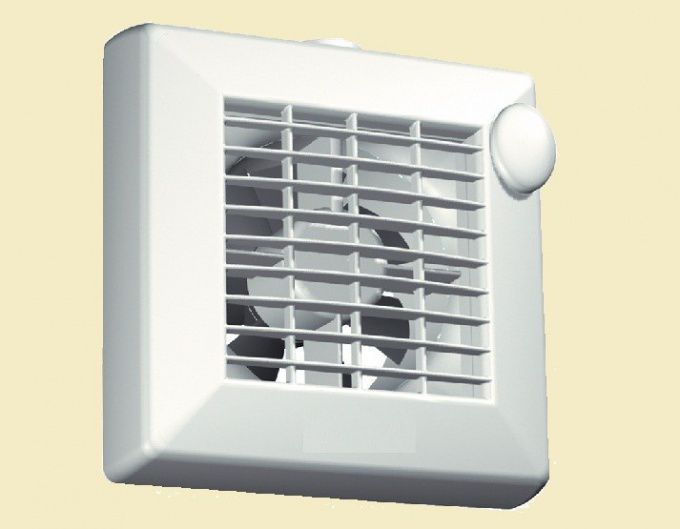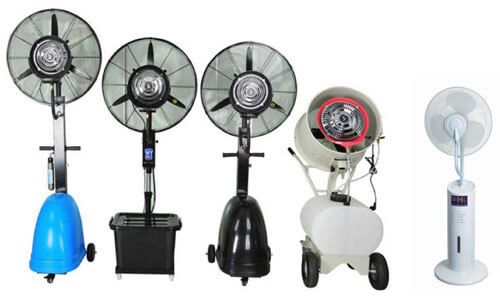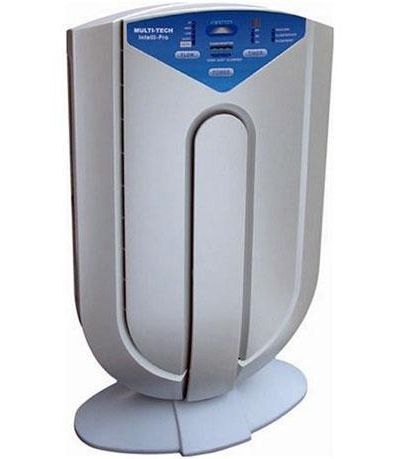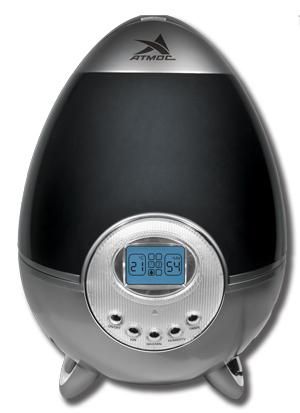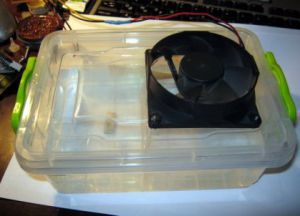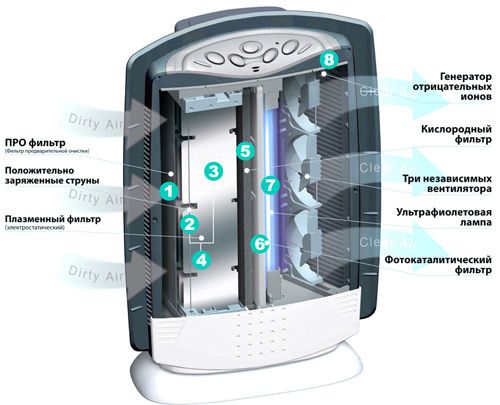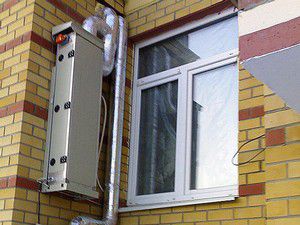An ordinary bathroom fan, for the most part, makes an unpleasant noise during operation. Such noise is sometimes a significant irritant to a person, which raises a serious question about the suitability of the device for use.
Problems that can arise from human exposure to noise include:
- severe, often chronic, fatigue;
- persistent migraine (headache);
- negative emotional background.
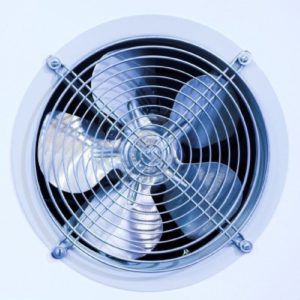
There are two ways to avoid such problems:
- get rid of the fan altogether, which, of course, will cause a number of other, no less serious, problems;
- replace the old one with a new silent device.
Because of all the problems that a conventional fan brings, many manufacturers are creating better bathroom devices that do not make annoying noises.
More details about the features of each individual device can be found on specialized forums on the Internet, where knowledgeable people will also tell you which device is better to choose. In addition, you can read comments on products in various online stores. Also, do not forget about the official websites of manufacturers of silent fans, where it is possible to find absolutely all the information and choose a suitable device.
Differences between a conventional fan and a silent one
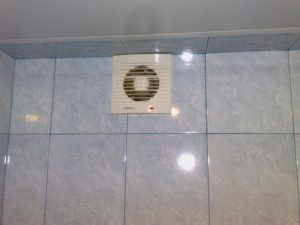
The frequency of sound generated by a conventional fan is 35 dB. Such a sound is perceived on the same level as a whisper, but it strongly attracts a person's attention, thereby causing discomfort. This is especially noticeable with prolonged exposure to hearing.
A silent bathroom fan, unlike an ordinary one, creates much less noise. Usually, the frequency of the generated noise does not exceed 25 dB. At this level, the impact cannot be heard, which is why staying in the bathroom does not make you feel unwell.
Any noise from a silent fan, including the sound of a spinning propeller, is ignored by the ear. To hear noise from the device, you must approach it within a distance of less than 1 meter.
How a silent fan works
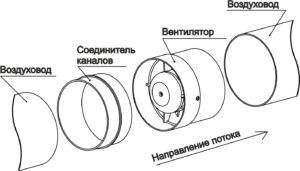
The ability of silent fans to operate without unnecessary noise is due to their special design. The main components of the device are only three parts, which, in fact, reduce the noise up to 25 dB. Thus, wherever the device is installed, its noise suppression ability will always be fully utilized.
The main components include:
- device body;
- engine;
- bearings.
To understand the principle of operation of the selected silent fan, it is necessary to study in detail every major detail of the device.
- Housing. A typical fan has a very flimsy and thin case. Because of this, vibrations constantly arise that create unpleasant sounds. In the silent case, the case is a solid, solid construction. Most often, the main material for the case is thick plastic. Such material easily suppresses any vibrations that arise, thereby reducing noise during the operation of the device.
- Engine. Silent fans have the same motor as conventional appliances. Their main difference from each other is the type of attachment to the body.In a silent device, the mounting method allows you to reduce all kinds of vibrations (noise) to a minimum. It is worth noting that with poor-quality mountings, the engine, during operation, creates vibration that resonates endlessly from the walls of the device - hence the noise appears.
- Bearings. Thanks to high-quality bearings, every part of the fan itself and its motor is able to run smoothly without creating unnecessary noise. Thus, the only difference between bearings in a silent device and an ordinary one is their quality.
In addition to the main parts, lubrication plays an equally important role. It is due to her that all parts of the device work smoothly, without creating excessive grinding and other noises in the bathroom. Among other things, the quality of the lubricant will also override the service life of the selected device.
It is worth paying attention to the fact that every household exhaust ventilation silent fan is created in full compliance with the highest quality standards. Finished products, before release, are repeatedly tested in all kinds of conditions. The device does not pass the test if the standard of the sound range exceeds the standard to hundredths of a micron. Thus, only the type of device depends on the choice of the consumer, and not its ability to suppress noise.
In many cases, improper balancing and calibration of the instrument is the cause of many noises. The most responsible manufacturers release their products only after passing all the checks, however, there are also manufacturers who ignore any deviations from the standard.
What are the types of silent fans
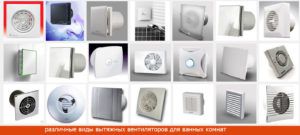
Silent exhaust fans for the bathroom can be very different. Each device produced is designed for different operating conditions. However, there are some exceptions, for example, a bathroom fan is also suitable for a toilet.
For more specificity, four main types can be distinguished among all kinds of silent models:
- overhead;
- radial;
- axial;
- channel.
Each appliance is designed to operate in a specific bathroom and toilet environment.
- An overhead fan is the most common type of appliance used in apartments. Such devices are remarkable in that to install the device, you just need to fix the fan in the ventilation compartment (at the outlet). Thus, many essentially unnecessary actions can be avoided. In addition, the amount of work is reduced even when a ready-made ventilation duct is initially present in the house.
- The radial silent fan is more suitable for large enterprises than for domestic bathrooms. Such devices are directly connected to an extensive network of air ducts ("snail"). Each device has a minimum noise indicator, however, it has huge dimensions, which is why, in fact, it cannot be installed in an apartment (especially in a bathroom or toilet).
- An axial fan for a bathroom differs from other devices in that the passed air flows have exactly the same direction as the rotor of the electric motor, due to which the blades of the device are driven. There are also fans with a different design - in them the rotor is located outside the device, taking the place of the stator. However, this type of design does not allow to eliminate all the noise generated, which is why such devices cannot be called silent. Thus, only a conventional axial fan is truly silent.
- The duct fan stands out among others in that it must be installed inside the ventilation duct of the bathroom. In general, this type of appliance cannot work outside the ventilation system.More attention here needs to be paid to its ability to absorb noise - it does it a little worse than the overhead type of devices, due to the absence of rubber parts of the case, but still better than an ordinary fan. In addition, problems with excessive vibration are easily remedied.
In addition to the previously mentioned appliances, there are other types of bathroom appliances. However, in most cases, these fans differ from each other exclusively by the presence of some additional features. For example, a household silent fan with a check valve that prevents air return when the device is turned off. You can also choose a model with a diffuser, whose main task is to move a given volume of air, due to which you can either strengthen the ventilation system or weaken it.
Installing a fan in the bathroom
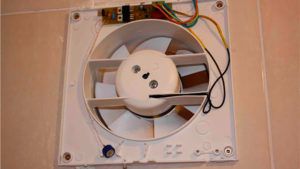
After choosing and purchasing a household appliance, it is possible both to independently install a household fan in the bathroom, and to entrust everything to professionals. Of course, if the device is installed incorrectly, its ability to absorb noise will be reduced to zero. Due to all kinds of problems, it is recommended to follow some simple guidelines for installing a fan with a non-return valve in the bathroom.
It is worth paying special attention to the fact that each type is installed in its own way.
- Duct fan. With the installation of this type of fan, the greatest number of problems can arise, due to the fact that its operation requires complete isolation from the surface of the air ducts. You can do without any aids, which will lead to a lot of noise during operation, or use specialized rubber bushings. Rubber gaskets should be placed on all sides of the fan so that the ventilation duct is properly insulated from the outside. In addition, for the full operation of the fan, while maintaining its original advantages, it is necessary to fix the device itself.
- Overhead fan. To install a fan with an overhead check valve, you will need to do a few simple manipulations. The whole installation process boils down to ensuring minimal contact of the walls of the ventilation with the surface of the device. If this is not possible, it is necessary to add rubber pads at each point of contact.
Additional Information
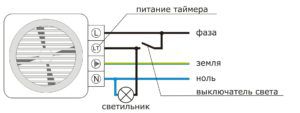
It should not be forgotten that a household bathroom fan with a non-return valve is a complete electrical appliance. Thus, it is necessary not only to correctly install the selected device in the ventilation shaft, but also to connect it to the mains. This can be done in different ways, for example, it can be equipped with its own switch or it can be connected to a common line with lighting.
Be that as it may, both bathroom power options are equal. However, for the greatest energy savings, it is recommended to equip the device with its own switch.
Due to the need to work with wiring, with a lack of knowledge, it is best to entrust all the work to professionals.

